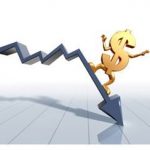I have been relying on David Hale as my de facto global macro economist for decades, and I never miss an opportunity to get his updated views. The challenge is in writing down David?s eye popping, out of consensus ideas fast enough, because he spits them out in such a rapid-fire succession.
Since David is an independent economic advisor to many of the world's government?s, largest banks, and investment firms, I thought his views would be of riveting interest. It was with great pleasure that I joined him for lunch at the Federal Reserve Bank of San Francisco to discuss the outlook for Asia.
David sees the US economy growing by 2.5% in 2013, China by 8.5%, but for much of Europe to remain in recession. He sees the best growth opportunities in Southeast Asia, which delivered stellar results last year.
The Philippines grew by 6.6% and has the best long-term outlook of all. Some 600,000 now work there in the call center and support business, and the industry is growing at a breakneck pace. Personal consumption is flying, and the government is about to launch a major infrastructure program. Heaven knows they need it, as I recall the roads there are absolutely deplorable. The ETF (EPHE) was on fire last year, up some 56%, making it one of the best performing single country funds.
Indonesia (IDX) expanded by 6.1% in 2012, making a killing on energy and commodity exports to China and Japan. Its ETF was unchanged last year, but could be ready for take off. Thailand (THD) scored a 5.5% gain in its GDP, boosted by flood reconstruction, taking its ETF northward by 38%. Malaysia?s economy (EWM) expanded by 5.3%.
David has seen the same dramatic improvement that I have in the economic data from China over the last three months. This is in response to a moderate stimulus budget which they started to implement in the summer. Residential housing, which has been a major drag on the economy for the past year, is now starting to trend up. Liberalization of real estate lending is in the cards.
While the Middle Kingdom lost 20 million jobs during the 2008 crash, almost none disappeared in the latest slowdown. This year, Chinese consumption will exceed that of the US for the first time in history, at $470 billion compared to $403 billion.
The fight against corruption has emerged as a major domestic issue. Some 25% of all the luxury spending in China is though to be for gifts (bribes) to government officials. Mid level Mandarins caught wearing $50,000 watches are now getting fired.
David made some far out predictions that were real zingers. Population growth is grinding to a halt throughout Asia. It is already well below the replacement rate in Japan and South Korea, which will soon be joined by China. This will eventually lead to labor shortages in Asia, and bring to an end the cheap labor regime, which has driven their economies for the past 100 years. The Chinese work force will shrink from five times ours to only three times.
Their cost advantage then goes out the window. The upshot for us is that perhaps half of the 6 million jobs that America lost to China over the last 20 years will come back. Many items can now be bought cheaper in Chicago than they can in Shanghai.
China will still become far and away the world?s largest economy in our lifetimes. In 1700, Asia accounted for 58% of world GDP. Some 250 years of wars pulled that figure down to 15% by 1950. It is on track to recover to 50% by 2050.
To learn more about David Hale and the extensive list of services he offers, please visit the site of David Hale Global Economics at http://www.davidhaleweb.com.







